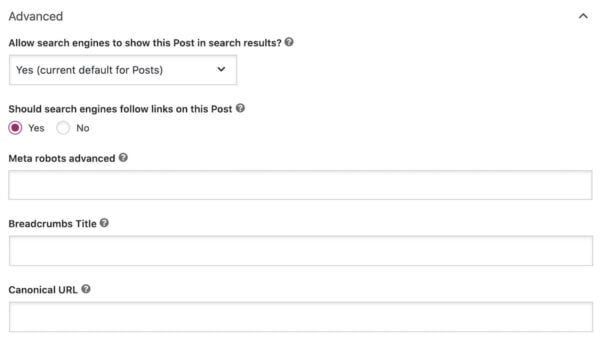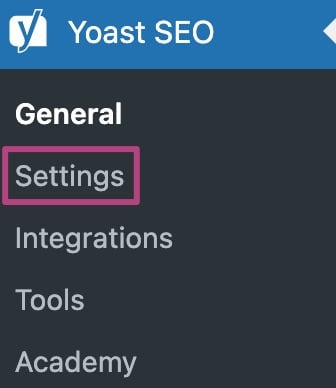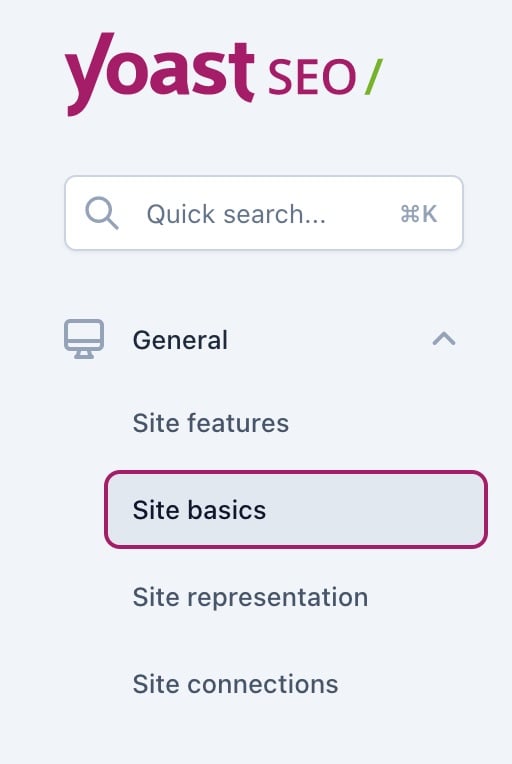Security: no advanced settings for authors
This feature lets you determine who gets access to the Advanced tab of the Yoast SEO meta box and the Yoast SEO sidebar. In the Advanced tab, you find the settings that allow you to remove posts from the search results or change the canonical. These are powerful settings, and, as such, it is advisable to let only specific users access them. That is why, by default, only editors and administrators can see and use the Advanced tab in Yoast SEO.
The Advanced tab settings in the Yoast SEO sidebar
With the Advanced tab in Yoast SEO, you can determine how search engines crawl and index your post or page. There are several settings in the tab:

Allow search engines to show this Post in search results?
This setting determines whether search engine robots can index your post or page. If you set this to Yes, the Google robots will index your post or page. As a consequence, your post or page will be able to appear in search engines.
Should search engines follow links on this Post?
You don’t want Google to index certain links in your content. With this setting, you can prevent Google from following such links.
Meta robots advanced
The advanced meta robots settings allow you to set the meta robots for this page or post to several values. Read more about the meta robots advanced settings here.
Breadcrumbs title
With the breadcrumbs title setting, you can change the breadcrumbs title for the Yoast SEO breadcrumbs. To learn more, read the article on how to change the breadcrumb title.
Canonical URL
Some of your URLs may contain the same content. To avoid confusing Google and the user, you can tell search engines which URL contains the original content. You do this by adding a canonical URL that this post or page should point to.
How to make the Advanced tab accessible for authors
Only editors and administrators can see and used the Advanced tab in the Yoast SEO sidebar. Follow the instructions below to make the tab available for authors as well.
- In your WordPress Dashboard, go to Yoast SEO

- Go to Settings

- Go to Site basics

- Under Site preferences, toggle Restrict advanced settings for authors to Off
The toggle will show a gray crossmark when it’s off.

- Click Save changes


